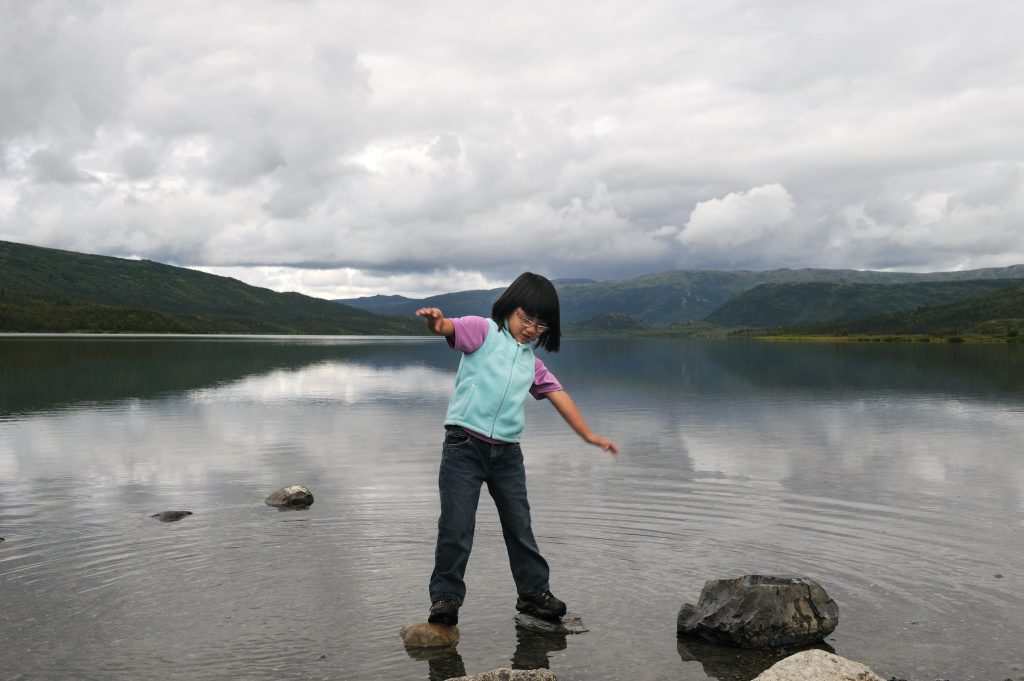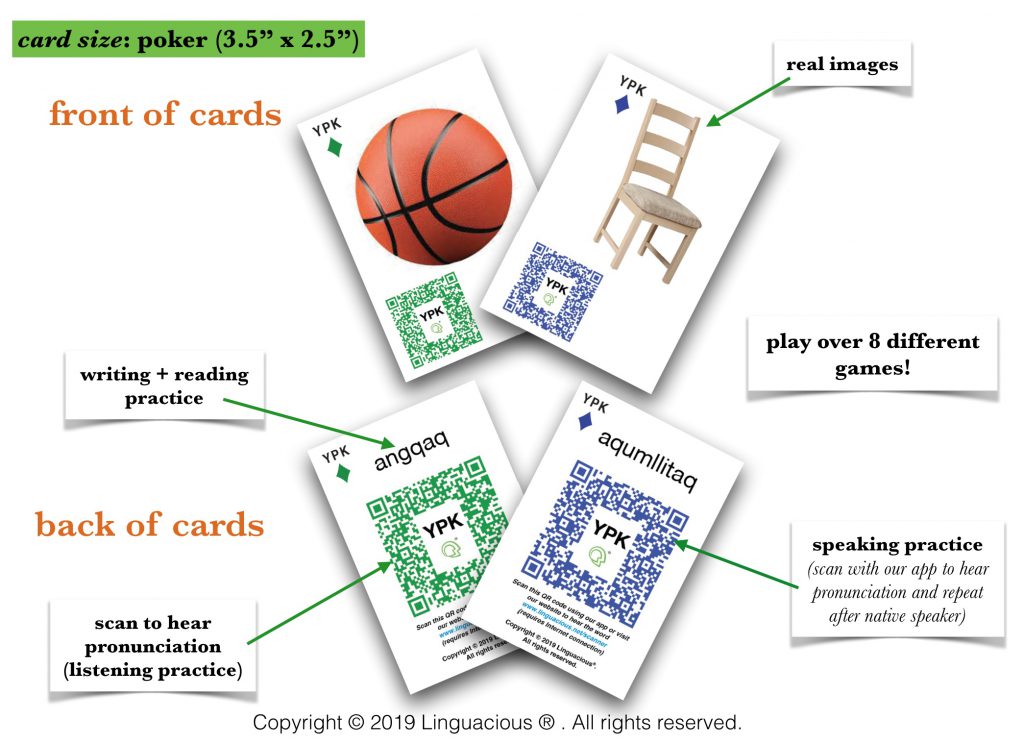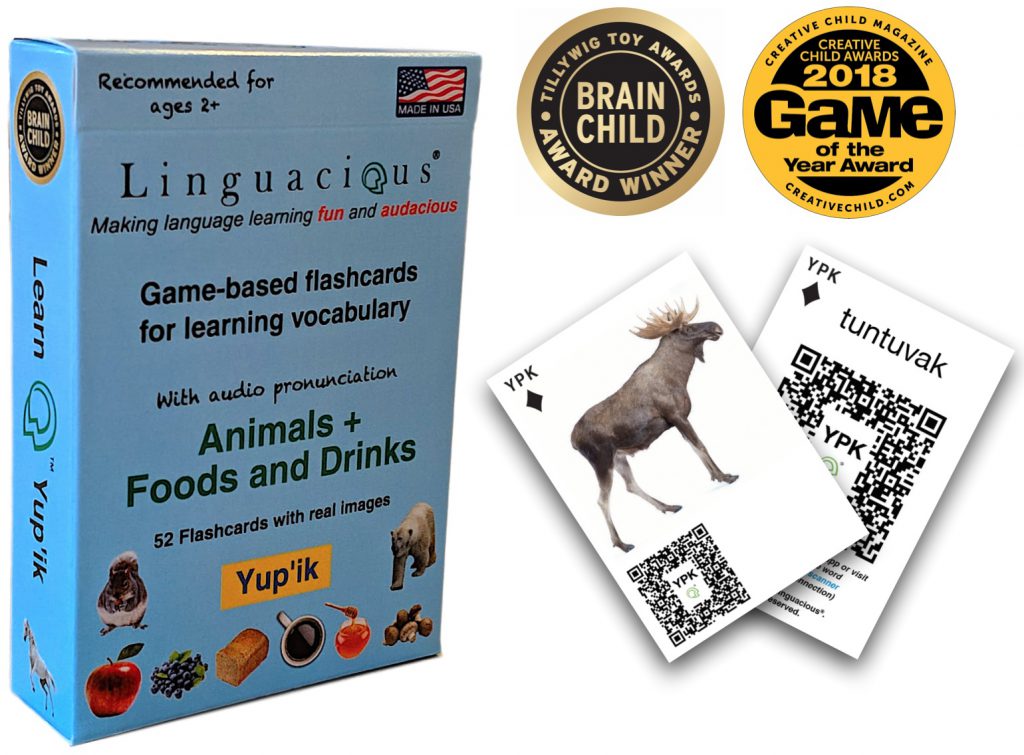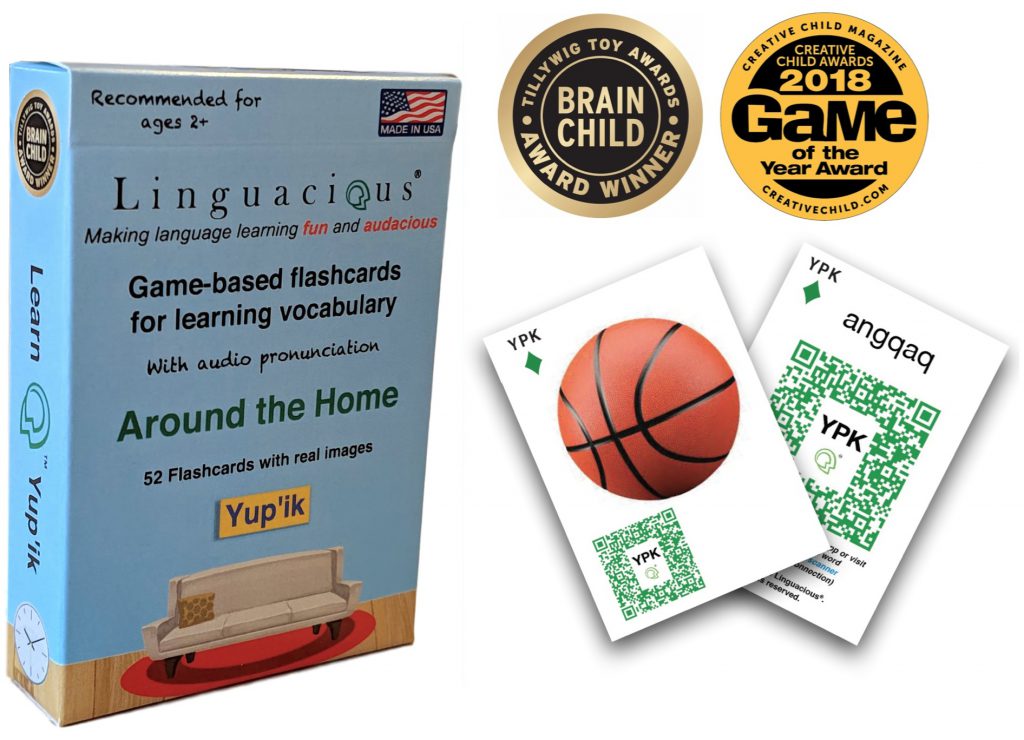
Daniel Ward asks Brandon Locke and Victor Santos to discuss how Anchorage School District is leading the revitalization of the U.S.’ second-most widely spoken native language, Yup’ik, through an innovative dual-language program
DW: I understand that Yup’ik is the second-most widely spoken Indigenous language in the U.S. Can you give me some background on it and its struggle for survival?
Brandon Locke: Historically, missionary and government-sponsored schools in Alaska and the Arctic attempted to eradicate Indigenous languages and ways of knowing by punishing students for speaking their languages (Wyman et al., 2010, p. 703). While Alaska Natives did not experience the genocide that many American Indians faced in the 1800s, they were forced to speak English, educated in English, and punished, often beaten, if they spoke their own languages. By breaking the linguistic bonds that tied children to their cultures and elders, a chasm opened up between many Alaska Native elders and youth. Much vital knowledge and wisdom was lost (Roderick, 2010, p. 7).
American politics, particularly in the six decades between the 1870s and 1930s, suppressed Native American languages and culture (LaPier, 2018). The Bureau of Indian Affairs (BIA) controlled Alaska Native schools for close to 90 years, from 1889 to 1976, causing havoc on the languages and cultures of the Alaska Native peoples (Andersen-Spear and Hopson, 2010). In elementary schools, Native children were schooled in English by imported Western educators, mostly Caucasians, who would live and teach temporarily in remote village schools for one or two years before moving back to their homes out of state.
These isolated, remote villages were not equipped with secondary schools, so when Native children were of age to enter high school, they were sent off to state-run boarding schools, many not even in Alaska, physically removed from their families, their villages, their cultures, and their languages. Because of this, many languages were lost over these decades, and the culture was severely compromised.
It wasn’t until the mid-1970s that the educational system for Alaska Natives began to change. Specifically, it was the Tobeluk v. Lind case, often referred to as the Molly Hootch case, in which 27 teenage plaintiffs brought suit against the state of Alaska, claiming that boarding schools for Alaska Natives were discriminatory and unjust. This landmark case is considered one of great significance in terms of Alaska Native education and Indigenous rights. In 1976, the Tobeluk Consent Decree was signed, which required the state of Alaska to build secondary schools in all Alaskan communities with 15 or more high-school-aged students.
In 1990, the federal Native American Languages Act was passed to preserve and protect Indigenous languages, and in 2014, Alaska passed House Bill 216, legally recognizing Alaska’s 20 Indigenous languages as official languages of Alaska, along with English. Seen at the time as primarily a symbolic statement, HB 216 turned out to be a monumental step toward elevating the status of Alaska Native languages and bringing attention to the urgent need to address language loss, reversing the results of a similar movement in the 1990s that culminated in English being named the official language of Alaska (Locke, 2018).
DW: Anchorage SD launched the first Yup’ik/English dual-language program last year. How did that come about and how is it progressing?
BL: The Anchorage School District is not new to dual-language immersion programs. The first one was launched in 1989 in Japanese. Since then, we have added Spanish, Russian, and German—all of which are now K–12. We’re in the process of building a Mandarin Chinese program, which currently goes up to second grade, and we will launch French next fall, starting with kindergarten. While we are very proud of these programs, there has long been a void in terms of Alaska Native language offerings. When the Native American Language Program (NAL@ED) grant opportunity came available from the U.S. Department of Education, ASD jumped at the opportunity to finally start an Alaska Native language immersion program. Many of our existing immersion programs began due to grant funding, especially when the FLAP grant existed.
In 2014, Alaska officially recognized 20 official languages, even though there are over 100 languages (variations and dialects) in the state, so selecting Yup’ik was somewhat controversial. However, Yup’ik is the most prevalent Alaskan language in terms of number of speakers, as well as in the quantity of printed and published materials (Locke, 2018). According to the U.S. Census Bureau (2015), Yup’ik has the second-greatest number of speakers (19,750) after Navajo, which has close to 170,000 speakers.
Regardless, the selection of one language over the other 20 languages was a political and cultural gamble. Compared to Hawai’i, with only one language (and culture), the 20+ languages and cultures of Alaska are varied, diverse, and each very proud. This said, given the prevalence of Yup’ik and the fact that it is one of the top five ELL (home) languages spoken by students in the Anchorage School District, it made sense to select Yup’ik as the choice language for the NAL@ED grant. There were additional reasons for selecting Yup’ik in Anchorage, namely the newly established preschool pipeline for ages zero to five through both the Cook Inlet Tribal Council (CITC) and the Cook Inlet Native Head Start (CINHS).

In fact, one of the strengths of this new program is the various partnerships that have been built into the grant, each supporting different components and expected outcomes. “In essence, we have created a Yup’ik Immersion Consortium” (Locke, 2018). Other reasons for selecting Yup’ik included population size, teacher availability, and community interest. Given the size of the Yup’ik population statewide, within Anchorage and within ASD, selecting Yup’ik as the first Indigenous immersion language will serve the greatest number of students.
Further, the available pool of teachers with language proficiency is largest with Yup’ik. According to the experience of other Indigenous-language immersion programs in Hawai’i and other parts of the U.S., when writing the grant, we anticipated teacher recruitment with language proficiency to be the program’s greatest challenge. Finally, ASD conducted a community survey in 2016 to assess the level of interest for immersion programs in new languages. Survey results put Yup’ik at the top of the Indigenous languages of interest. It also placed third in interest overall, a remarkable placement considering that over 100 languages are spoken at home with ASD’s student population.
DW: Are all of the students of Yup’ik heritage?
BL: No, while the original enrollment goal was to get 50 students in the program, we started with 30. This is typical when a brand-new program starts that parents may be skeptical of, since it is brand new. We found this when we started Chinese immersion three years ago. We currently have 23 students in the inaugural class, and their ethnic make-up includes:
Yup’ik and other (white, black, American Indian, Asian, other Alaska Native): 17
Other Alaskan Native: 4
White: 2
The program is open to any K–1 student in ASD.
DW: Did you encounter any negativity toward the program?
BL: Remember, this is an oil-funded state, so there were a few letters published in local newspapers claiming that “nobody needs Yup’ik,” but there were more positive reactions. One that particularly struck me was when a Caucasian man at a school celebration sought me out to thank me for the program. His ex-wife was Yup’ik but didn’t speak the language, nor did her mother, but his daughter’s great-grandmother did, and he wanted the daughter to be able to converse and learn from her.
DW: How was the Yup’ik curriculum created?
BL: We were extremely fortunate to be able to partner with the Lower Kuskokwim School District (LKSD), out of Bethel, Alaska. Their district is the hub of Yup’ik Alaska Natives, and their district has developed an excellent Yup’ik literacy program that they shared with us. They provided us with digital versions of their K–6 literacy materials, which we have since printed. Science and social studies are also taught in Yup’ik in our DLI program, which means that our Yup’ik teaching team had to translate and adapt existing board-approved curricula into Yup’ik, since we teach the district curriculum in our immersion programs, albeit in the immersion languages.
DW: Did you have difficulty sourcing materials?
BL: There is always a challenge with locating developmentally and linguistically appropriate materials when it comes to immersion. That said, Yup’ik is the most prevalent of the 20-some Alaska Native languages, and a fair number of children’s books have been written and published in Yup’ik. We are also developing our own materials in-house that we plan to use in future years, and we are continually developing materials.
Victor Santos: To produce flashcards, we enlisted the help of a teacher expert, Katie Tunuchuk, who is a native Yup’ik speaker and also the Yup’ik immersion coordinator for the Anchorage SD’s Yup’ik immersion program. The initial idea was to release the flashcards in three topics: (a) around the home, (b) animals, and (c) food and drink. Each of these decks/topics has 52 cards, just like a standard playing
card set.
Once we got to work translating the 52 English concepts/words (accompanied by their related images) that we usually have, it turned out that many of the animal and food/drink concepts (such as avocado, banana, cake, chocolate, salad, olive, buffalo, gorilla, ostrich, panda bear, giraffe, etc.) were not part of Yup’ik culture and were not in common use, so they could not be easily translated into the language. For Yup’ik culture, there is not much need to talk about salad or giraffes, it seems.
BL: Another hurdle was the orthography, which has only been used for the last 200 years of the language’s long history, because it varies from speaker to speaker and from dialect to dialect, but theirs is a collaborative society, so the elders, who share their knowledge through stories, worked together to agree on orthography.

DW: How does the work by Linguacious help with the learning and preservation of languages like Yup’ik?
VS: The great majority of language companies do not pay attention to smaller, less commercially interesting and less profitable languages such as Yup’ik, but Linguacious is different. My wife and I started the company, inspired by our trilingual children, who are being raised speaking Portuguese and Russian in addition to English. We also leveraged the fact that I have been in the field of language learning and assessment for over two decades. When I was doing my bachelor’s degree in linguistics in Brazil, I used to work with Indigenous languages of the Amazon, so I have always had a passion for less common languages, especially those that are in danger.
Because Linguacious is a small, family-owned company, we can do whatever we feel like and focus on any languages that we set our hearts to. We do not have to answer to investors, bosses, or anything like that, just our hearts and our call to help kids around the world be excited about learning languages. We recently developed cards in Kurmanji Kurdish, a language that is a target of much discrimination in the areas where it is spoken and that has hardly any resources available here in the U.S., especially for children wanting to learn the language. Recently, we were approached by the Irish government in order to develop our flashcards in Irish Gaelic, a language that has many more second-language learners than native speakers in Ireland itself. The Irish government, seeing the potential that the Linguacious flashcards had to get young Irish kids excited about learning Irish Gaelic, got in touch with Linguacious and decided to sponsor the development of the Linguacious Irish Gaelic flashcards, which are the only ones in the world that feature audio pronunciation by native speakers of each of the three main accents of Irish Gaelic (Connacht, Ulster, and Munster). Recently, we have also been in contact with groups in Hawai’i, and there is a chance we might publish our cards in ʻŌlelo Hawaiʻi (Hawaiian) soon.
We can get our flashcards published very quickly and with excellent quality in a large number of small languages if we have the right partners, and this is one way we can contribute toward the preservation of languages such as Yup’ik. With Yup’ik, from the moment we were approached by Brandon Locke (Anchorage SD) to develop our flashcards in Yup’ik, it took less than four months for them to become a reality. For Yup’ik, we published them in two different topics (each deck has 52 flashcards): (a) Yup’ik around the home, and (b) Yup’ik animals and foods.
Kids can play many games with our cards, which allow kids (and adults!) to focus on reading, writing, speaking, and listening, ensuring they are focusing on all four language skills, and we are always open to new partnerships.
DW: What makes the cards different, and what do you see as their main points of attraction?
VS: The Linguacious flashcards are the only flashcards in the language-learning market that, due to their unique layout and elements, allow kids to practice all four skills (reading, writing, listening, and speaking) independently, while playing fun and social games, appropriate for kids at different levels of cognitive and linguistic development. They are also the only flashcards available that include audio by a native speaker, which is something that both parents and kids love.
Parents who may not speak the languages themselves but who want their kids to learn them (as is common with many Yup’ik parents, as Brandon noted) get especially excited about this audio feature we have.
Instead of using the English alphabet to show users how to pronounce words in Arabic, Yup’ik, Hebrew, Mandarin, and so on, we actually give them access to the audio right from the cards; they simply scan each card with the free Linguacious app and boom, they can now listen to a perfect model of pronunciation by a native speaker, in the blink of an eye.
No more learning wrong pronunciation, which can actually do more damage than good and could lead to fossilization of incorrect pronunciation, for example. With our cards, the chance of that happening is of course much smaller.
Another main point of attraction of the Linguacious flashcards, and one that has been focused on by many reviewers, is their portability. The cards are the same size as a normal deck of playing cards (poker size), and the cards themselves are casino quality.
Because of this, kids, parents, and educators can simply put them in their bags or purses and take them everywhere.
Got five minutes to wait at the doctor’s office? Great, you can learn some Yup’ik while you wait.

DW: Are there any plans to recreate the program in other schools? How do you see it moving forward?
BL: I am not aware of any current plans to replicate our program. It is unclear how ASD would be able to effectively and financially sustain multiple Alaska Native language immersion programs. Identifying qualified teachers and existing and appropriate materials is at the forefront of this concern. However, I think our existing program model (including its planning, development, and implementation) could serve other language communities well. ASD had been waiting for a funding source for years, so when NAL@ED came available, it was the perfect time for us. I am hopeful that additional grant opportunities will come available soon for other language groups to take part in.
DW: Do you believe that this will save Yup’ik for future generations?
BL: Our program, albeit small, has students who are being educated in Yup’ik by native Yup’ik speakers. The language has skipped one or two generations, but it is being revived. Some of our students have parents who do not speak Yup’ik, but their grandparents might, and their great-grandparents do. This is pretty common among Alaska Native populations. For sure we are equipping the newest generation with the language of their heritage before it is lost forever. Materials such as the Linguacious cards also provide the recorded (thus documented) spoken language and sounds, something that written texts cannot provide.
Our students are able to hear the spoken language via a native speaker. I believe these efforts are in fact saving the Yup’ik language, and thus culture, for future generations.
VS: Anything that can be done to revitalize and maintain a language is important, no matter how small of an act it is. The more resources and programs available in the language, the better, since these educational resources form the raw material used to educate kids in the language across all four skills in programs such as the Anchorage SD Yup’ik immersion program.
However, at the end of the day, there is one factor that matters much more than any other when it comes to revitalizing or saving a language: the value that children from that culture itself give to their own language and to their own culture. Linguistic loss stems from not enough kids learning the language; it’s a simple formula. The number of native speakers then diminishes little by little, until only elders can speak the language, leading to the death of the language, which is a very sad outcome for humanity as a whole.
If Yup’ik children believe that there is little value in being raised with Yup’ik values and speaking the Yup’ik language, they will easily want to assimilate to the surrounding and more powerful language (in this case, English) and culture (in this case, American culture).
Brandon Locke is director of World Languages and Immersion Programs, Anchorage School District, Anchorage, Alaska.
Victor Santos, PhD, is chief product officer at Linguacious (www.linguacious.net) and director of assessment at Avant Assessment, https://avantassessment.com/.
References
Andersen-Spear, D., and Hopson, E. (2010). “Alaska Native Education: Past, present, and future.” In Barnhardt, R., and Kawagley, A. O. (eds)., Alaska Native Education: Views from Within. Fairbanks, AK: Alaska Native Knowledge Network.
LaPier (2018). http://theconversation.com/how-the-loss-of-native-american-languages-affects-our-understanding-of-the-natural-world-103984
Locke, B. (March/April 2018). “Language, Culture, and Community Engagement: Anchorage’s new Yup’ik immersion program.” Language Educator 13 (2): 41–43.
Roderick, L. (ed.) (2010). Alaska Native Cultures and Issues: Responses to Frequently Asked Questions. Fairbanks, AK: University of Alaska Press.
Wyman, L., Marlow, P., Andrew, C. F., Miller, G., Nicholai, C. R., and Rearden, Y. N. (2010). “High-Stakes Testing, Bilingual Education and Language Endangerment: A Yup’ik example.” International Journal of Bilingual Education and Bilingualism 13 (6): 701–721.







